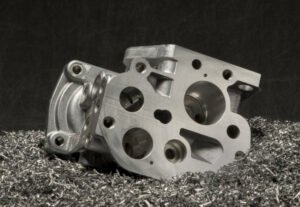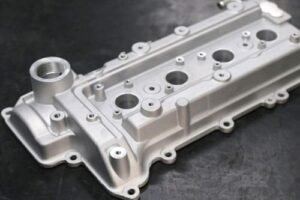The melting point of aluminum alloy is approximately 660 ° C (approximately 1220 ° F), and usually, the pouring temperature of molten aluminum alloy is slightly higher than the melting point, between roughly 680 ° C to 780 ° C (1256 ° F to 1436 ° F).
Aluminum is a high-strength and excellent thermal conductivity metal widely used in aviation, transportation, construction, and packaging industries. Die-casting technology is widely used among many methods for processing aluminum due to its high efficiency and accuracy. This article explores the crucial link in this process – the melting temperature of aluminum alloy, to ensure the high quality and reasonable cost of producing castings.

Melting Point and Pouring Temperature
The melting point of pure aluminum is approximately 660 ° C (1220 ° F). However, in industrial production, due to the addition of other metal elements to improve different physical and chemical properties in aluminum alloys, the actual melting temperature is slightly higher than that of pure aluminum.
In the process of aluminum die-casting, the pouring temperature of aluminum alloy is higher than the melting point, which requires precise control to ensure the fluidity of the metal fills the small spaces of the mold and replicates complex details. The pouring temperature is generally set between 680 ° C and 780 ° C (1256 ° F to 1436 ° F). The temperature selection depends on the alloy type, the design complexity of the casting, and other factors in the production process.
The Influence of Alloys
Different alloy compositions can affect the selection of melting temperature. Common aluminum alloy elements include silicon, copper, magnesium, zinc, etc. Each element brings different characteristics to aluminum, such as silicon improving fluidity and copper enhancing mechanical strength. Mixing these alloy elements requires careful control to achieve the required mechanical properties and melting characteristics.
The Importance of Temperature Control
Accurate temperature control is crucial for manufacturing high-quality aluminum die castings. If the temperature is too high, it may lead to excessive oxidation of the aluminum alloy, generating excess waste and reducing the mechanical properties of the casting. If the temperature is too low, incomplete filling or cold insulation may occur, affecting the integrity and surface quality of the casting. Effective temperature management can also reduce energy waste, lower casting costs, and extend the service life of molds.

The correct temperature for aluminum alloy melting is the key to ensuring the effectiveness of the die-casting process. By understanding the properties and requirements of alloys and accurately controlling the melting and pouring temperatures, the goal of producing high-quality and cost-effective aluminum castings can be achieved.
Thank you for reading our article. If you need related products or have any questions or suggestions about our products, please don’t hesitate to contact us by sending an email, and we will reply to your email as soon as possible.

